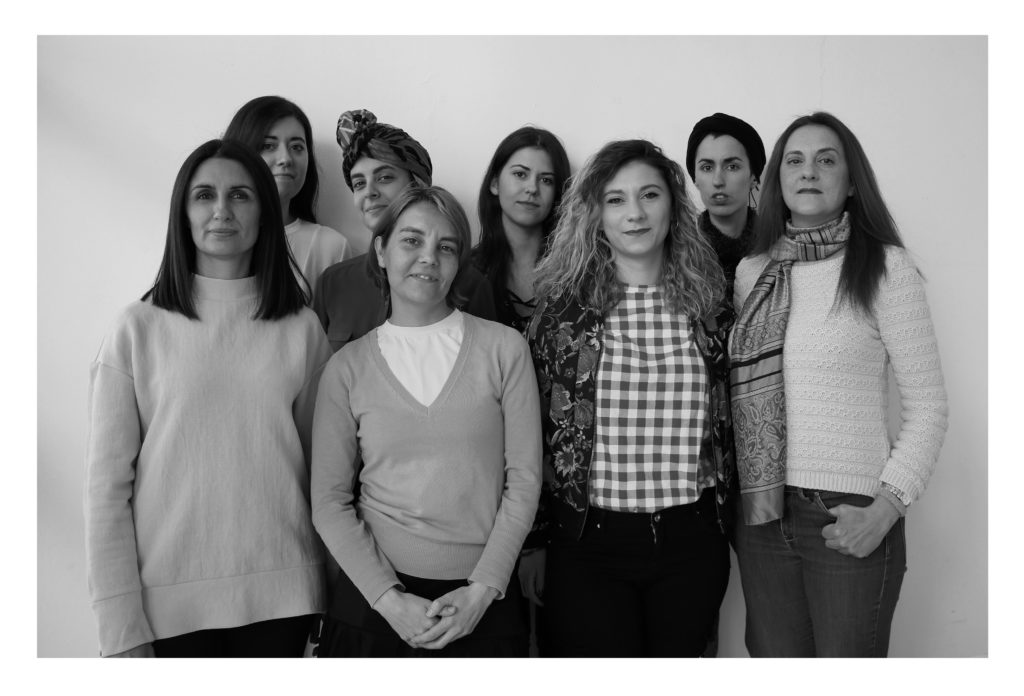
Design Students Push Their Ideas Far Beyond the Ubiquitous Pair of Jeans
By working with students from Valencia College of Art’s Fashion Co-Design and Sustainability Master’s program, Lenzing gives future fashion designers and denim consumers the chance to show the textile community their vision of tomorrow’s denim.
Newly qualified fashion designers are joining our industry at a dynamic and exciting time where sustainability is becoming of paramount importance to the industry and increasingly important to consumers. Today’s denim buyers are paying close attention to denim makers’ sustainability efforts and manufacturing ethos, all along the entire supply chain.
Lenzing manufactures its wood-based cellulose fibers according to the toughest environmental criteria, starting from its primary raw material which is derived from ecologically managed forests. While Lenzing has already received several international awards for its responsible economic management and environmentally-compatible production processes, the company continues to strive for ever more sophisticated ways to bring in sustainable methods. The Sustainable Denim Wardrobe (SDW) is one of Lenzing’s most ambitious garment collections yet. Collaborators for SDW include fabric mills, laundry specialists and textile design students.
For the collection’s designs, Lenzing and Jeanologia came together with Spain’s Valencia College of Art third year students. Seven students, who were working towards a Master’s in Fashion Co-Design and Sustainability, were chosen to bring a fresh eye to a modern denim wardrobe collection. Additional garment design input was supplied by Jeanologia, as well as garment make-up and laundry processing expertise. The majority of the garments were processed using Jeanologia’s cutting edge laundry technology including laser, ozone, e-Flow and EIM measurement software.
The 11 fabric mills that participated were Bossa (Turkey); Calik (Turkey); Candiani (Italy); Imatex (Italy), Kassim (Pakistan); KG Denim (India); Martinelli Ginetto (Italy); Mozartex (China); Orta (Turkey); Unitin (Spain), as well as seamless knits developed by Santoni (Italy).
At the college (also known as EASD – Escola d,Art I Superior de Disseny de Valéncia), the students are taught and mentored by Tonuca Belloch, who founded her eponymous TONUCA fashion brand in 1999, just two years after earning her Doctor of Fine Arts degree from the Polytechnic University of Valencia. She has shown her designs throughout the world and served on numerous fashion juries.
The aim of the program she leads is to develop design thinking, where the objectives of the end consumer, along with the designer and the manufacturer, are part of the consideration. “Co-design or collaborative design means starting from the new relationship between the designer, the company and the new consumer, which is the basis of the project,” according to the school. “It works on the design proposal from a slow perspective, where emotions, ethics, sustainability and different recycling techniques become a main objective.”
Carved in Blue caught up with Tonuca’s students ahead of the Lenzing SWD release. Their projects take their inspiration from a variety of sources, such as the likes of America’s mid-century Beat Generation, an ancient Japanese archery tradition, and 1970s Aspen ski bums, among others, all with an eye to sustainability. Their designs reflect their creativity, and their attitudes about fashion production demonstrate that the level of commitment to ecologically sound and humane methods runs deep.
The Designs: Irati Buzunariz’s “Parka” was inspired by the traditional Japanese archery sport Yabusame, yet designed for the practical needs and design whims of city dwellers. Paloma Cabrera’s “American Jeanology” tapped into the intensity of America’s Beat Generation for her unisex, comfortable design, with drawings based on Allen Ginsberg’s “Howl,” a poem she says portrayed that era’s sometimes grim reality. Irene de la Osa’s “Dandy Shirt” was designed from the chaos that comes from passion. “It’s formally a clean and also disorderly garment,” she says. “The overlap of the pocket emulates the confusion created when you live from your emotions.” Ana Fialho developed a texturized sweater based on “The Denim Addict Look,” with patchwork pieces that represent different kinds of wood that exist all over a house.
Meanwhile, Ana María García Jiménez’s project was the Sporty City Slicker, a deconstructed classical knitted vest. “He receives a paper with a written note, immediately afterwards wrinkles it strongly with his hand, even more, breaks it into several pieces and drops them on the table,” García writes about her inspiration. “When he has calmed his anger, returns to the table and rebuilds the paper piece by piece and stores it in his pocket.” Elsa García Martinez, for her own Sporty City Slicker, borrowed some of the glamour of early Seventies Aspen. “The performance of the fabric allowed me to create a garment with a good balance between form and function,” she says. Finally, Mónica Santiago’s Dandy Chino also takes its cue from the “style sense of the 19th century dandy, with added comfort to allow commutes by bicycle and after-work meetings in casual settings”.
Carved in Blue: What do you hope for the future? What are your ambitions in the apparel industry?
Irati: My goal is to work as a sustainable designer and share my vision with more people. For the fashion industry, I think the most important thing is to be able to implement the circular economy. It’s no good if large, fast-fashion companies introduce more environmentally-friendly materials if there is no sustainable structure in place as a base. And on the other hand, companies and the governments of the countries where most clothing is made [must] apply social ethics. Ecology is important, but sustainability is also necessary for the human part.
Paloma: I sincerely hope the future of fashion evolves towards sustainability. I think it’s vital. I think the circular economy is going to be a big part of how we conceive the future, and I would like to be part of it. Changing the production system so waste is no longer an issue should be in every designer’s mind.
Irene: My future plans are to be able work as a fashion designer, always working to make fashion in a social and collaborative way.
Ana: My hope for the future is that consumer behavior changes, slowing its hungry pace. Regarding the apparel industry, my ambitions are to help it became really sustainability and ethically focused.
Ana María: My goal is to create awareness in the use of responsible apparel with the environment and the rights of workers, contributing to sustainability and designs consistent with that idea.
Elsa: I would like to design under a criteria of sustainability without neglecting the quality and design of the products.
Mónica: I would like to build my own sustainable design business linked to crafts. To someday become completely sustainable and … try not to deceive the consumer by selling a sustainable ethic that is not real.
Carved in Blue: Why do you like the apparel industry?
Irati: I like fashion because it develops creativity at the service of people, of the body. It is an art that envelops us and touches us.
Paloma: I like the idea of making people feel better about themselves by just putting something on. Sometimes wearing the right pair of jeans or a nice sweater can make you feel ready to face the world.
Irene: I’ve always admired the industry, ever since I was a child watching my grandmother work in fashion— her passion has become my passion. Fashion has taught me to develop my creativity, to continually advance and to know myself better.
Ana: What I always liked about apparel and fashion is the way it mirrors the social and cultural nuances, how it expresses people’s aspirations and the challenge implicated in designing for the human body. Regarding the “industry” part I’m actually not a fan.
Ana María: I consider that the clothes we wear are an expression of ourselves, a part of us, in a way that reflects our own history and evolution.
Elsa: It’s a way of putting your creativity to practice.
Mónica: The I do not like industry itself and even less so at the moment — until the day it becomes sustainable, where prime designing and quality is important instead of sales, without the exploitation of both resources and people and making money without any regard to ethics. If that day comes, it is only then that I will be interested. At the moment I am interested in design and creativity, and trying to change that type of model in our industry.
Carved in Blue: What did you like about working with fabrics using TENCEL® branded lyocell fibers?
Irati: The fabric I’ve worked with has a very pretty print and is soft. I like it because nobody would believe that it is an ecological fabric.
Paloma: I liked how soft and comfortable they were. You don’t usually think about where stuff comes from, and touching a soft blue fabric that originates from a tree is amazing.
Irene: Working with fabric that respects the environment.
Ana: I liked the drape and hand of the fabric.
Ana María: I like being able to count on sustainable and responsible textiles with the environment, with its great diversity of textures and colors. The fabric that I used in my design in particular stands out for its drape.
Elsa: The fabrics with TENCEL® fibers transmit cleanliness and comfort.
Mónica: I liked knowing that the manufacturing process has a sustainable ethic, that its existence does not have a very big impact on the environment.
Carved in Blue: Who do you admire most in our industry?
Irati: I admire committed companies like Patagonia that are changing the idea we’ve had of this industry.
Paloma: Humble and hardworking people who make it run every day.
Irene: Although I admire many designers and companies in the sector, there isn’t one in particular with which I totally identify. I admire all the companies that work in the craft and that advance with ethical and social values, so that fashion adds and doesn’t subtract.
Ana: Nowadays I don’t have a special admiration for any famous designers. In general I admire the work of the many designers who challenge the current fashion system, by creating new ways of experiencing fashion and ethical ways of working and creating synergies—with communities instead of exploiting them.
Ana María: I do not have a particular signature or brand, but I admire and follow initiatives by social groups in countries like Mexico, Denmark or Germany in their commitment to sustainability.
Elsa: The businesses who know how to join ethics with profitability.
Carved in Blue: What does Carved in Blue mean to you?
Irati: It reminds me of natural indigo rocks before powdering.
Paloma: It means the life you give to your favorite jeans. They might be worn out, but they are part of your best memories.
Irene: I would describe it as “quality” and “environmental respect.”
Ana: Well, “carved” gives me the feeling of crafts and hand-working, while “blue” takes me straight to jeans and denim. I like to think that “carved in blue” means a new way of thinking and producing jeanswear, in a more sustainable and slow kind of fashion.
Ana María: The ability to be able to generate a piece of denim you want or desire, as if from a work of art, sculpture — what it could be.
Elsa: To me it suggests cleanliness, neutrality and work or craftsmanship done in a responsible and transparent manner.
To review the Sustainable Denim Wardrobe visit Kingpins New York, May 10th and 11th or email denim@lenzing.com.






